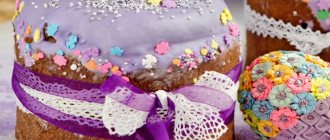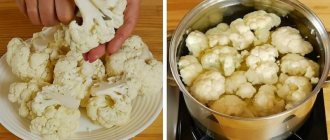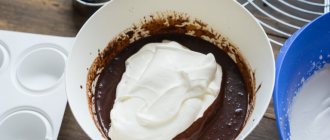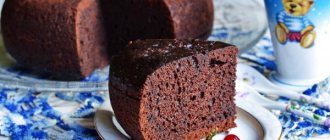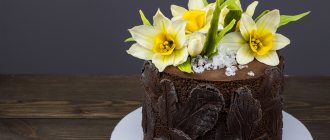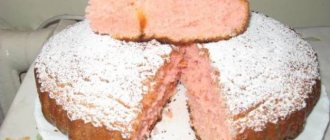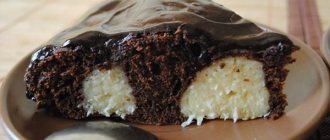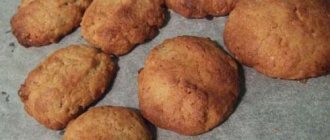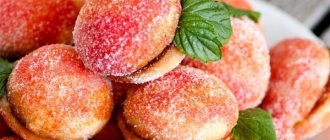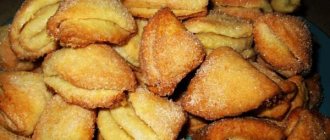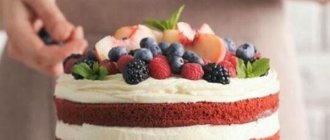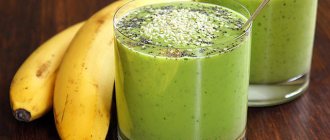Colored cake icing can be transparent or opaque, have different colors and tastes, depending on the additives. It gives a lot of scope for creativity. It is often used to cover a mousse cake to highlight its ideal shape with a glossy sheen.
Colored icing is prepared from chocolate, sugar or powdered sugar and turns out to be quite high in calories. But sometimes it’s worth pampering yourself, isn’t it?
Glaze with drips has become very popular. The “flowing” drops are so mesmerizing with their beauty that you definitely want to make this miracle with your own hands. It’s not at all difficult to prepare this at home.
What dyes should I use for glaze?
The colors of this confectionery product are given by various food “chemical” dyes and natural ones from the juice of berries and vegetables. The glaze acquires color depending on how much and what additive was used. You can make icing of almost any color.
With food dyes the color will be brighter and more saturated, but they are not entirely useful. But with natural ones, the color of the coating will be quite pale, but such a cake can be offered even to a child without fear.
For pink icing, add a drop of red food coloring or cherry juice. If you add more cherry juice, the color will be burgundy.
The beets will turn the glaze purple.
For red glaze you will need a special dye. From natural sources, you can use cranberries.
Green cake frosting is made by adding spinach juice.
Carrot and orange juice make the coating orange.
To obtain brighter shades, for example, yellow, cyan, indigo, pearlescent, etc., you still have to use “chemistry,” albeit a safe one.
A little history
More than two centuries ago, colored glazes emerged from glazes. The baked goods were covered with well-boiled sugar syrup and placed in an oven at a low temperature. After drying, an opaque film formed on the product. Later, juices from berries and plants were added to the mixture to add color.
As history shows, white icing for a cake, the recipe for which included sugar, spoke of the purity and innocence of the bride, as well as the material wealth of the family. The cost of this product was then considerable; it was available only to wealthy people.
Over time, dyes began to be added to the sweet mass; colored glaze took its place in the art of confectionery as an elegant completion of a culinary composition. Decorating finished products with monograms and patterns made from sugar mass, and even sculpting figures, has become commonplace, and now you can read step by step how to prepare icing for a cake in any cookbook.
The ease of preparation and the minimum required ingredients for preparing this confectionery component are rightfully appreciated by professional chefs. Lovers of home baking also often use it to decorate their products.
Maybe it will be interesting for you to read and find out how to paint gingerbread cookies in the article: “Painting gingerbread cookies with glaze, icing, master classes for painting gingerbread cookies at home.”
Features of preparing colored glaze
- When preparing the glaze, you should never be distracted and allow it to burn.
- It is necessary to mix thoroughly all the time. Otherwise you will spoil the taste of the glaze.
- You don't have to use store-bought chocolate, you can use cocoa. 100 grams of chocolate will replace 50 grams of cocoa and 50 grams of butter or cream.
- If the icing with butter does not seem white enough, drop just a little blue dye into it - it will set off the yellowness and you will get a snow-white decor.
- Once you've frosted the cake, be sure to refrigerate it for at least three hours to set. And when you cut it, do not forget to heat the knife, otherwise the coating may crack.
Coating of cakes and pastries
To get a beautiful and evenly poured cake, you need a special grid on which it is placed when it is removed from the mold, and only after that they begin to pour the icing.
To make smudges, you will need two colors of glaze. For example, first green icing is applied to the surface of the dessert, it is given time to “set”, and then a small amount of pink icing is poured onto the “top” of the cake so that it flows over the edges. It is advisable to cool it a little in advance so that it becomes more viscous and flows more slowly - there the smudges will be more pronounced and picturesque.
Basic recipe for glaze with glucose syrup
The base glaze can be given any color you like. Let's look at a few of these recipes. We use the dye according to the instructions. If you do not have glucose syrup, then you need to prepare it in advance.
Ingredients for syrup
- 64 grams of glucose tablets or powder;
- 36 grams of water;
- 1 teaspoon glycerin
Preparation
- Boil water and glucose together until the glucose dissolves.
- Add glycerin.
- Pour into a glass jar.
- Store in the refrigerator for several months.
Ingredients for glaze
- 150 g chocolate (dark for brown glaze, white for using dyes);
- 150 ml syrup;
- 150 g sugar;
- 100 ml condensed milk;
- 12 g gelatin;
- 135 ml water (60 ml for gelatin).
Preparation
- Soak the gelatin according to the instructions on the package.
- Mix syrup and sugar and boil for a while. Cool.
- Add gelatin, condensed milk, dye. Add chopped chocolate. Beat everything with a blender so that no bubbles appear. To do this, the blender needs to be held in only one direction and slightly tilted.
- The whipped mass must be cooled for several hours. Then heat to a temperature of 35 degrees.
- Carefully pour onto the surface of the confectionery product (the cake must first be leveled with cream on top and sides).
- The glaze will spread on its own; there is no need to adjust it. For drips, you need to pour out the coating quite slowly to control the situation.
If you use white chocolate without coloring, you will get white cake frosting.
Velvet
- Cooking time: 15 minutes.
- Number of servings: 10 persons.
- Calorie content of the dish: 1433 kcal.
- Purpose: for the holiday table.
- Cuisine: European.
- Difficulty of preparation: easy.
Velvet icing for the cake makes the finished dessert very expensive and elegant, and it is created in a couple of minutes. However, to use it you will need a spray gun, which resembles an airbrush. Before frosting, the cake must be carefully cooled and placed on a rotating platform. It is advisable to use a velvet coating for mousse or yoghurt desserts.
Ingredients:
- chocolate – 100 g;
- cocoa butter – 100 g.
Cooking method:
- Melt chocolate with cocoa butter and stir.
- Cool the mixture to 40 degrees, pour into the spray gun. Spray.
Caramel glaze
Ingredients
- 5 grams of gelatin;
- 10 grams of starch;
- 30 ml water;
- 100 grams of sugar;
- 10 grams of lemon juice.
Preparation
- Soak the gelatin.
- We dilute starch in water.
- Place a thick-bottomed pan on low heat, add sugar and lemon juice.
- Stirring, prepare caramel.
- Remove the pan from the heat, add water and cream, stirring continuously.
- Place it on the stove again, add salt and starch, wait for it to boil and remove from the stove.
- When the mass has cooled to 50 degrees, stir in the gelatin and cool at room temperature.
Sugar
- Cooking time: 15 minutes.
- Number of servings: 10 persons.
- Calorie content of the dish: 1178 kcal.
- Purpose: for the holiday table.
- Cuisine: English.
- Difficulty of preparation: easy.
Classic icing made from powdered sugar is an excellent option for coating biscuits, shortbread cookies, and gingerbread cookies at home. She always helps out housewives who have an empty refrigerator and kitchen cabinets, because they always manage to find some sugar and grind it. Lemon juice is an optional element, responsible only for the whiteness of the finished mass. An important nuance of this recipe is that you need to glaze the cake very quickly, since the product hardens quickly.
Ingredients:
- powdered sugar – 300 g;
- water – 5 tbsp. l.;
- lemon juice – 1 tbsp. l.
Cooking method:
- Carefully sift the powdered sugar several times, forming a mound.
- Pour hot water into the center, immediately whisking everything together.
- If the mixture turns out liquid, add a little powdered sugar or starch.
- Pour in lemon juice, whisking continuously until the mixture becomes fluffy.
Protein colored glaze
The white glaze turns out to be quite thick. It is often used to draw fine lines on the surface of confectionery products.
Ingredients
- 1 protein;
- 200 gr. powdered sugar;
- 1 tablespoon lemon juice;
- dye.
Preparation
- First remove all fibers from the protein and pour into a bowl.
- Add sifted powdered sugar and beat until white.
- Pour in lemon juice and beat again until thick. If necessary, add more powdered sugar.
For gingerbread
Baking decorations can act as a binding solution. Steps for preparing the coating for a gingerbread house:
- Beat the whites of two eggs until foamy.
- Pour the mixture into 500 g of powdered sugar, add 3 g of cinnamon.
- Beat with a mixer for 3-5 minutes.
Apply the resulting mixture to the joints of the gingerbread plates, forming a house or other figure.
Professional glaze
This glaze is used by professional confectioners. It is very dense, holds color well, and hardens quickly.
Ingredients
- half a teaspoon of almond extract;
- corn syrup;
- 2 cups powdered sugar;
- 4 tablespoons milk;
- dye.
Preparation
- Mix powder with milk. The mass will be quite viscous.
- Add extract and syrup.
- Beat until shiny.
Useful tips
- To minimize the formation of bubbles, the blender should be held at a slight angle to “pull” the mixture into one stream. If you still cannot avoid getting air into the glaze, you can remove the bubbles with a spoon or pass the mixture through a sieve. There is also a special emulsion attachment for the blender.
- When slicing a cake, a common problem that arises is when the icing trails behind the knife. You can avoid this by warming up the knife a little beforehand. The cake should be very cool.
- If the glaze layer is too thick, you can remove it with a spatula. The spatula is also useful when removing pastries and cakes from the wire rack so that the icing threads do not hang down.
- A special ring tape will help you remove the cake from the mold. It fits into the ring before assembling the cake and helps keep the edges of the product even.
- And if the mirror glaze doesn’t work out the first time, don’t despair. The more training, the better the result!
Colored mirror glaze
The method for preparing a unique mirror coating for baking is quite simple, but it has its own secrets, without knowledge of which it will not be possible to achieve the desired result. And this secret is quite simple. It consists in strictly observing the temperature regime within 30 - 35 degrees.
Exceeding the temperature will make the mixture too liquid, and excessive cooling will cause it to thicken prematurely. An important nuance here is the temperature of the biscuit product.
Apply the mirror mixture only to the surface of the cake frozen in the freezer.
Ingredients
- gelatin (powder or sheet) – 12 g;
- glucose syrup (replacement with invert syrup, molasses or honey is allowed) – 150 g;
- condensed milk – 100 g;
- granulated sugar – 150 g;
- cold water – 135 ml;
- food coloring.
Preparation
1. Pour gelatin with water (60 ml). 2. Place sugar in a bowl, add water (75 ml) and syrup. 3. Place on the stove and bring to a boil, wait until the sugar is completely dissolved. 4. Warm the chocolate a little in a water bath until softened. During the heating process, you need to monitor the chocolate to prevent it from overheating. 5. Pour the melted chocolate into a blender glass. Add condensed milk and hot syrup to it. Mix everything and gradually pour melted gelatin into the mixture. 6. Add a few drops of gel coloring to the resulting cake icing mixture. 7. Thoroughly mix the mixture with a wooden spoon until the color is uniform. Now you can apply the resulting mass for dessert. In addition to the recipe for preparing fondant for a cake described above, chefs also know other tricks. We are talking about two more recipes. The first involves preparing colored fondant for a cake without heat treatment. The second is preparing fudge using high temperatures.
From cocoa
- Cooking time: 10 minutes.
- Number of servings: 10 persons.
- Calorie content of the dish: 2594 kcal.
- Purpose: for the holiday table.
- Kitchen: homemade.
- Difficulty of preparation: medium.
Are you looking for a successful and quick glaze option for drips on a cake that has a liquid consistency but hardens quickly? Try this recipe for cocoa chocolate glaze, tested by hundreds of housewives. It is inexpensive, light, and the taste of the finished mass is not inferior to the classic one, which needs to be prepared on a chocolate bar. Condensed milk gives it density and thickness.
Ingredients:
- butter – 200 g;
- condensed milk - a glass;
- cocoa powder - glass.
Cooking method:
- Melt butter with condensed milk.
- Add cocoa while whisking this mixture.
- Pour over cake while frosting is moderately hot.
Colored glaze without heat treatment
Ingredients
- 200 g of sugar, which will turn into powdered sugar;
- 4 tbsp. spoons of carrot (cherry, beet or spinach) juice;
- 2 tbsp. spoons of lemon juice;
- 2 egg whites.
Preparation
- Sift the powdered sugar and mix with the egg whites. Add freshly squeezed lemon juice there.
- To get a bright orange glaze, you need to add carrot juice to the resulting composition, for a purple color - beet juice, for a burgundy shade - cherry juice. The green color will be obtained if you use spinach juice.
- It is important to stir the glaze well and for a long time until smooth. Such actions will prevent the appearance of lumps.
- Now you can apply the resulting coating to the cake.
In addition to colored mirror glaze, chocolate glaze can also be prepared. It is prepared almost as simply as the two colored glaze recipes described above.
Chocolate
- Cooking time: 35 minutes.
- Number of servings: 10 persons.
- Calorie content of the dish: 1884 kcal.
- Purpose: for the holiday table.
- Cuisine: French.
- Difficulty of preparation: medium.
Leading chefs are confident that high-quality chocolate icing on a cake should be prepared not from cocoa powder, but from cocoa beans and similar butter. However, these components are difficult to obtain, and the price is not budget-friendly, especially if the housewife wants to practice cooking and applying glaze to a sweet dessert. A good alternative is chocolate. Take dark tiles with the simplest possible composition.
Ingredients:
- condensed milk - a glass;
- dark chocolate – 200 g;
- cream liqueur (Bailey's is ideal) – 50 ml.
Cooking method:
- After setting up a water bath, boil the cream.
- Reduce burner power to 20%. Add the chocolate broken into pieces.
- Stir until it melts and all ingredients form a homogeneous mass. Remove from stove.
- Add liqueur and stir again. Use the coating warm.
Colored glaze with heat treatment
Ingredients
- 100 ml water;
- 250 g sugar;
- 4 tbsp. spoons of bright juice (beets, carrots, etc. can be used).
Preparation
- Pour water into the pan, add sugar. Put it all on the fire.
- Cook the liquid for about 5 minutes, stirring constantly. Any foam that appears should be removed.
- Then pour the syrup onto a plate. Mix it with colored juice. Mix.
The colored glaze will gradually harden. Before use, it is advisable to melt it in a water bath.
Now that the glaze recipe for the cake has been selected, you can safely create stunning culinary masterpieces and delight your loved ones with delicious, impressively presented desserts!
Creamy
- Cooking time: 30 minutes.
- Number of servings: 10 persons.
- Calorie content of the dish: 1387 kcal.
- Purpose: for the holiday table.
- Cuisine: French.
- Difficulty of preparation: difficult.
Those who love a caramel note in desserts should figure out how to make cream icing. It is glossy, so it is recommended for cakes with a perfectly smooth surface. It is advisable to first use mousse cream under the glaze or at least thick jam, which is leveled with a spatula. The recipe is described in as much detail as possible, so mastering it should not be difficult for you.
Ingredients:
- cream 35% – 175 g;
- gelatin – 7 g;
- brown sugar – 200 g;
- water – 175 g;
- corn starch – 1 tbsp. l.
Cooking method:
- Soak the gelatin.
- After sifting the starch twice, pour in the cream (it should be cold!), stir, getting rid of lumps.
- Heat the sugar in a frying pan, wait until it darkens and begins to melt. The power of the burner is minimal, you can’t interfere.
- When the sugar has a caramel color, carefully pour in the warmed water. Increase the heat under the frying pan until the mixture comes to a boil.
- Add cream with starch, remove from burner.
- When the mass has cooled slightly, add gelatin. Mix. Operating temperature – 27 degrees.
White chocolate
White icing for chocolate cookies will perfectly complement the crispy ginger treat with its delicate taste. White chocolate is a capricious lady, but the glaze based on it is just to lick your fingers!
Includes:
- 90 g chocolate without additives;
- 3 tablespoons of heavy cream;
- a tablespoon of butter.
The cooking process is as follows:
- The chocolate is finely chopped and placed in a saucepan.
- A water bath is used for melting.
- Cream is added and the mixture is melted until smooth.
- The mixture is removed from the bath and a piece of butter is placed in it.
- Everything must be thoroughly mixed until a homogeneous shiny substance.
- All is ready. Feel free to drizzle your cookies with fresh icing.
